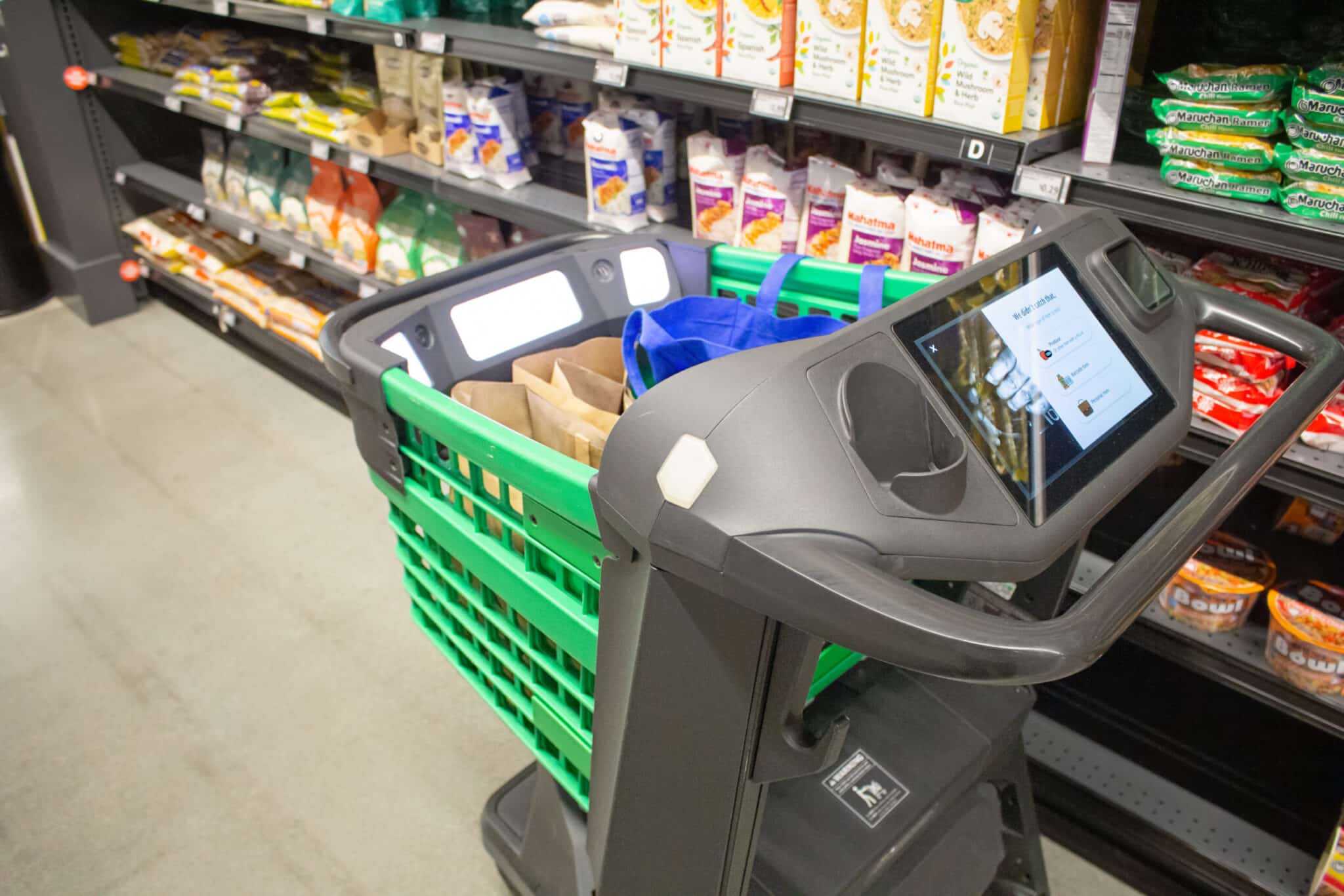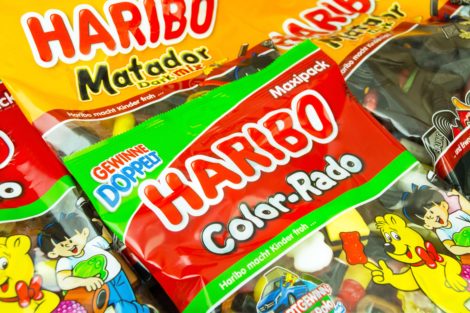Manufacturers in the supermarket sector are posting unprecedented profitability figures. Their operating margins have risen spectacularly, thanks to shrinkflation on the one hand, but also to price increases, pure and simple.

Inflation has a lot to answer for. Although it is behind us, consumer goods manufacturers still use it as an excuse to practice shrinkflation. This pricing technique consists of reducing the size of containers without the consumer noticing. And as if that were not enough, the latest statistics show manufacturers are also increasing their prices. It is a double punishment for consumers’ budgets. But margins have never been so high. Welcome to the wonderful world of pricing in 2025.
Enjoy our industry expertise for your marketing studies
Shrinkflation: key figures 2024-2025
- The average Milka chocolate bar has gone from 100g to 90g, and from €1.35 to €1.99 (+60%).
- Evolution of operating margins between 2021 and 2024
- PepsiCo: +27.2%
- Mondelez: +24.6%
- Henkel: +13.1% sales
- Unilever: +16
- Nestlé: +7
- Beiersdorf: +47.8
- Price increases among manufacturers between 2021 and 2024:
- PepsiCo: +34
- Mondelez: +30.9%
- Henkel: +30.6% Unilever: +20.4
- Unilever: +20.4%
- Nestlé: +17.7%.
What is shrinkflation? Where does it come from?
Shrinkflation is when we reduce the quantity of a given product while maintaining or even increasing its original price. It is a strategy adopted by more and more food industry groups, especially during inflation.
Highly in the spotlight in 2022, this is not a new phenomenon. Shrinkflation has already been around for over 20 years. It is boosted by inflation, rising raw material costs, and the introduction of new taxes.
Despite its dubious nature, this technique is perfectly legal! But that does not mean consumer protection groups will let it happen. Shrinkflation enthusiasts face a fait accompli, while perceived consumer confidence declines.
And yet, the effects of content reduction on the producer’s cost price are questionable. Admittedly, there is less product. However, coordination and packaging costs remain the same. What changes, however, is the risk of seeing one’s image tarnished by this shrinkflation action.
Brands are no longer content to reduce product quantity
Shrinkflation was not a panacea for the large industrial groups owning FMCG brands. They also had to find other ways of increasing profits more massively.
The results are spectacular (except at Nestlé, which cost CEO Mark Schneider his job). The operating results (EBIT) of the 6 largest FMCG groups show double-digit increases (except for Nestlé). Beiersdorf, for example, saw its profitability increase by 47.8% between 2021 and 2024. Mondelez and PepsiCo are close behind with +24.6% and +27.2% respectively. Unilever achieves +16%, Henkel +13.1%, and Nestlé, the least successful of the six groups, “only” +7%.
To achieve such satisfactory results in such turbulent times, these 6 groups have all implemented shrinkflation. But that is not all. Two other trends can be identified.
Prices have risen massively
There is no better way to increase margins than to reduce quantities (shrinkflation) and raise prices. Whereas in the first phase of shrinkflation, prices remained constant, and manufacturers took the gamble of raising prices, too, and it worked. Mondelez raised its prices by 5.4% worldwide in 2024, and PepsiCo by 5%. That is well above inflation.
However, the choice comes from the price evolution since 2021. Hold on to your hats. The increase is 34% at PepsiCo, 31% at Henkel, 20% at Unilever, and 18% at Nestlé.
Strategic rationalizations
We already talked about rationalization in this article on innovation. At that time, food industry players massively reduced their investment in R&D to save on fixed costs.
While innovation has picked up again, there has also been strategic repositioning. Henkel, for example, decided to divest its mid-range brands with sales of around one billion Euros.
One of the classic cost-cutting instruments is downsizing. This is the lever that Unilever decided to use to increase its competitiveness. Nearly 6,000 jobs have been eliminated.
9 examples of products prone to shrinkflation
Lindt chocolate truffles
Widely discussed in France in recent weeks following the foodwatch dossier, the case of Lindt is being debated. Over the last two years, the Swiss brand’s milk Truffles have gradually shown signs of shrinkflation. In this case, portions have decreased from 30 to 24.
In addition, the product’s price has also changed: it has increased by 4% since 2020. The consequence is strongly felt on the price per kilo: +30% in 2 years.
In Swiss and Germanic lands: Haribo’s Color-Rado
Haribo and shrinkflation: these are distinct methods for two different domestic markets. Here, Color-Rado candies are singled out.
In Switzerland, the package price is changed (upwards, of course). To be exact, Haribo’s instructions to Swiss retailers now indicate a higher recommended price. According to 20 Minutes, “some Haribo sweets now cost between 4% and 8% more” than before.
On the other hand, Haribo has adopted an alternative method in Germany since the quantity decreases, and the price does not rise. We are talking about 11 fewer candy bites per pack of Color-Rado.

Kiri and its reduced portions of cheese
Also questioned by foodwatch, Kiri has allegedly resorted to shrinkflation to reduce its production costs. Indeed, the brand decided in early 2021 to reduce the size of its cheeses. Weighing today 18g, the portions of Kiri were 11.1% bigger 18 months ago.
On the price side, Kiri differs from Lindt because it has not touched the price of its products. Only the price per kilo has been impacted by this product change: +11% since 2021.
Fewer Chocolate Kisses for Hershey
Little known in Europe, Hershey’s Chocolate Kisses are a recognized example of shrinkflation in the United States. The brand has adopted the same method as Kiri cheese. It only touches on the quantity without altering the product’s price.
Melissa Poole, vice president of investor relations at Hershey, will even say:
Hershey is reducing the size of its packaging while maintaining a similar price point to keep customers who only have to spend $3 for a bag of Chocolate Kisses, instead of $5 or $6.
Gatorade opts for a change in packaging
Then, the example of Gatorade is slightly different. The American energy drink was accused of shrinkflation when it changed its packaging. American consumers, unfortunately, found that their favorite drink had lost ⅛ of its volume. Of course, the selling price had not decreased; on the contrary: it was even higher!
Its owner PepsiCo then defended itself from any shrinkflation practice. It even assured that Gatorade had planned this packaging change for years.
Cadbury’s Dairy Milk bar is also a victim of shrinkflation
March 2022: in the middle of the war in Ukraine, Cadbury uses shrinkflation for its Dairy Milk.
The bar then saw its quantity drop by 10%, for an unchanged selling price. This is a typical case of a conflict with global consequences. Energy prices, ingredient prices, and production chain costs have all increased recently. In any case, these are the arguments used by a brand spokesperson to justify this practice.
We understand that consumers also have to deal with rising costs (…) But, in this challenging environment, we have had to slightly reduce the average weight of our Cadbury Dairy Milk bars.
Too much inflation, not enough Nescafe Azera
Nescafé is not immune to shrinkflation either to maintain decent profits. Azera soluble coffee has undergone the same changes as Cadbury’s Dairy Milk. We’re talking about a 10% drop in quantity for a price that hasn’t moved one iota.
Beth Schubert, a co-founder of Own The Grill, is one of the consumers affected by this policy change produced by Nescafé. She says Nescafé admits to shrinkflation. The spike in coffee bean prices over the past year is believed to be the reason for this decision.

Domino’s makes its savings in chicken
Finally, Domino’s stands out from the crowd of brands using shrinkflation. For a good reason, the fast-food franchise is taking this choice seriously.
On this subject, the American entrepreneur Charmaine Chan assures us that it is not an isolated case. Faced with rising chicken prices, the American restaurant owner’s pizzas now contain fewer wings. Specifically, we are talking about a 20% reduction in the amount of chicken in a pizza at Domino’s.
Barilla denies any practice of shrinkflation
In Italy, Barilla finds itself in trouble following accusations of shrinkflation. Indeed, some consumers have noticed that rigatoni sold at various times did not have the same weight. 454g against 410g; this corresponds to a 9.7% decrease in the quantity of pasta for Barilla.
Nevertheless, the Italian brand invokes a technical argument to defend itself from such a practice. The 454g package would have been marketed only in the United States, while the 410g package would have been intended for the Canadian market.
Consumers are very attentive to these cost-cutting practices. Brands must therefore be able to explain themselves clearly and quickly when they are accused of shrinkflation.








![Illustration of our post "Pay the true price for your coffee at Albert Heijn [Nudge Marketing]"](https://5cc2b83c.delivery.rocketcdn.me/app/uploads/true-price-albert-heijn-4-120x90.webp)

![Illustration of our post "Cross-media: definition, strategy, and examples [Guide 2023]"](https://5cc2b83c.delivery.rocketcdn.me/app/uploads/cross-media-120x90.jpg)